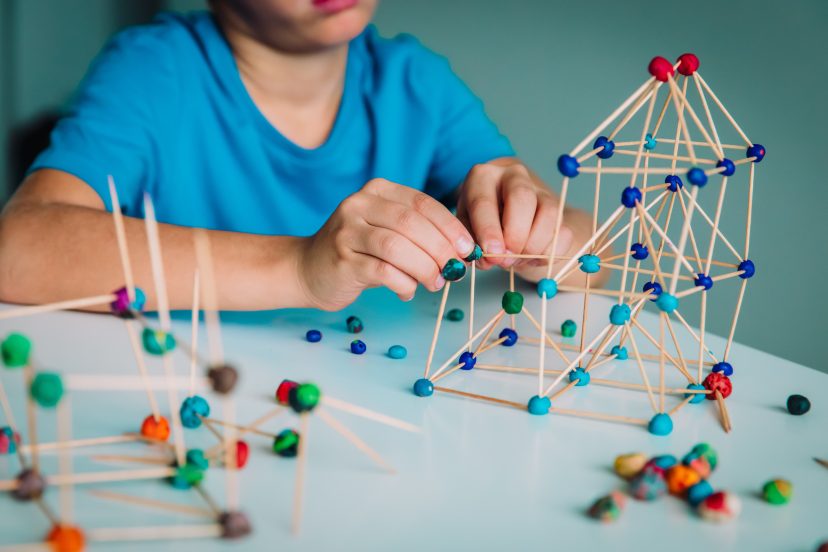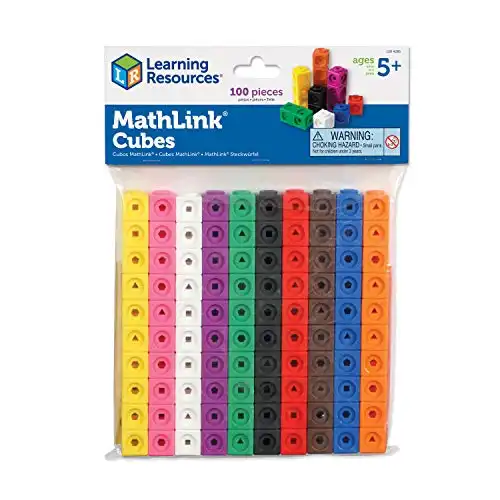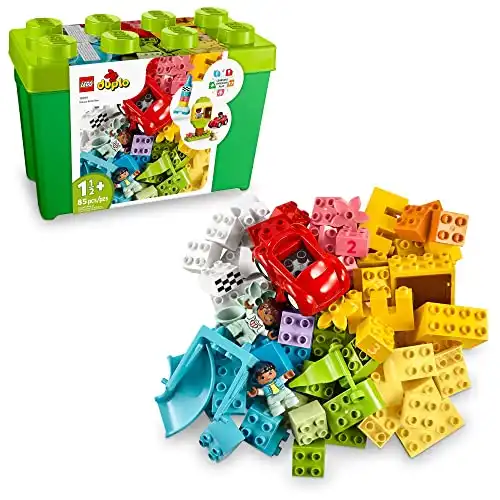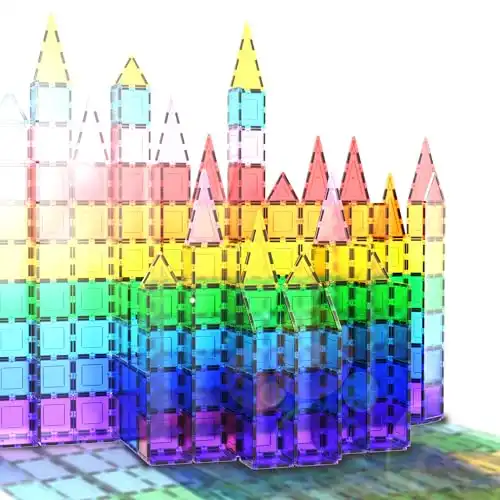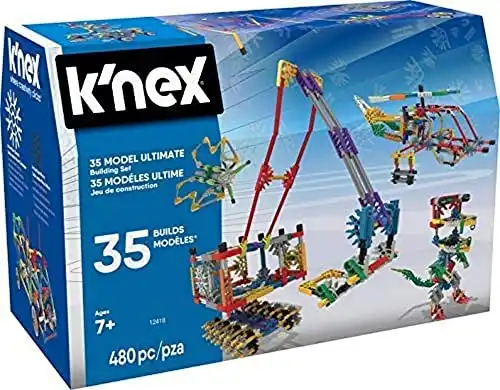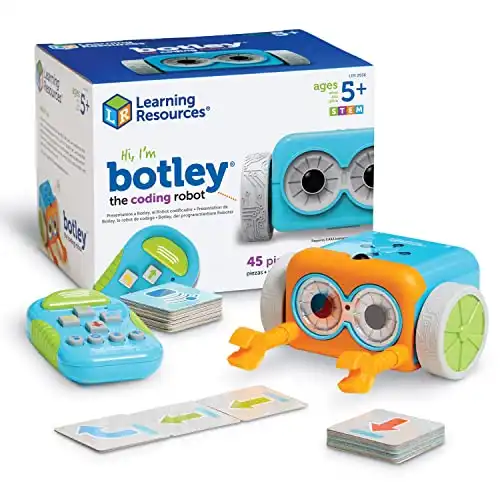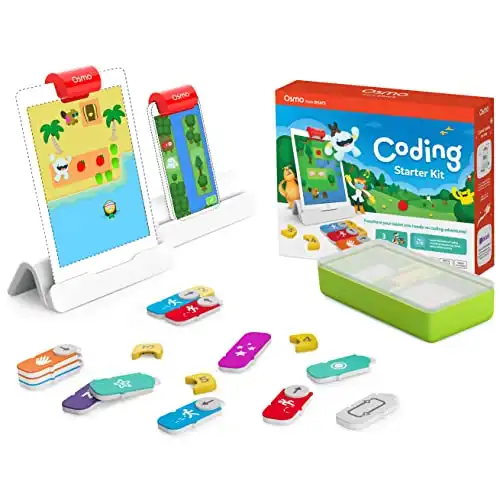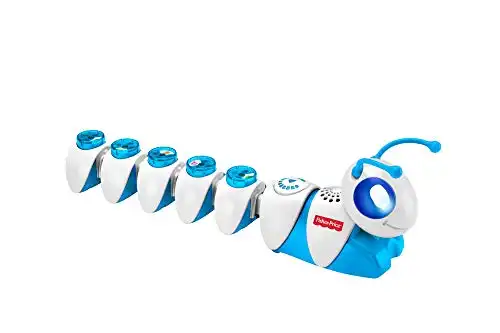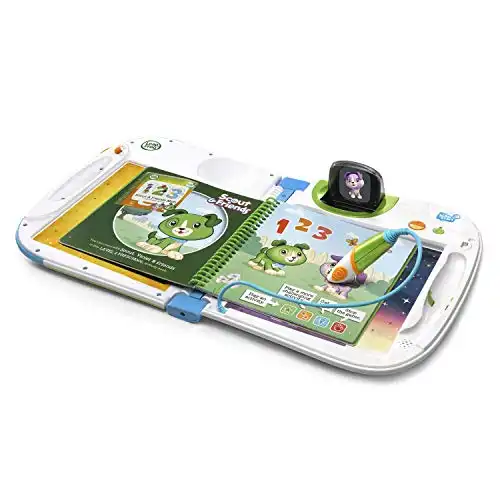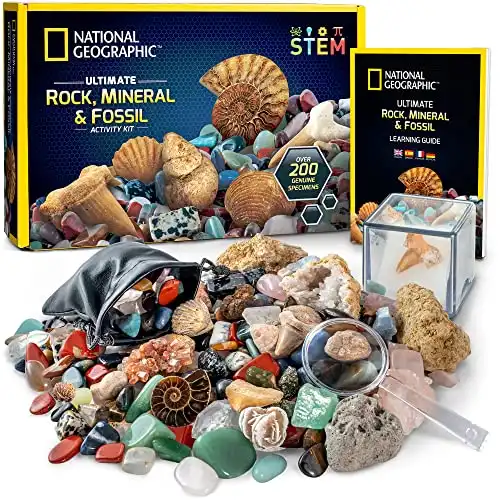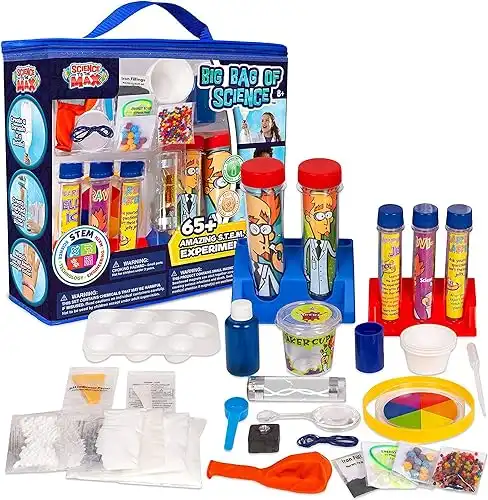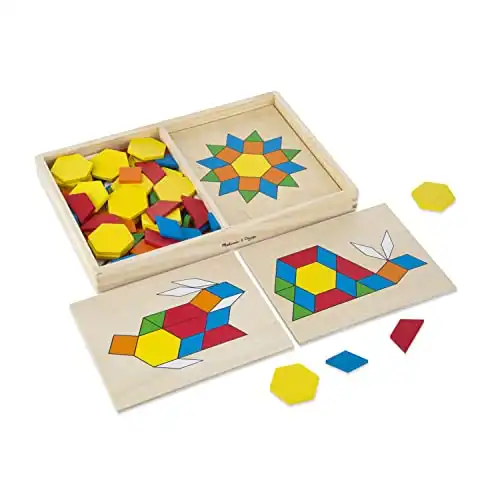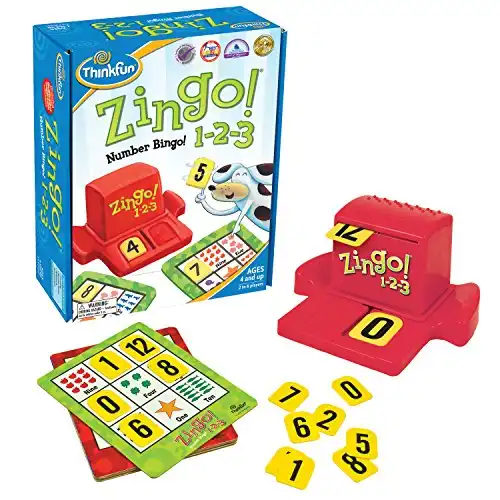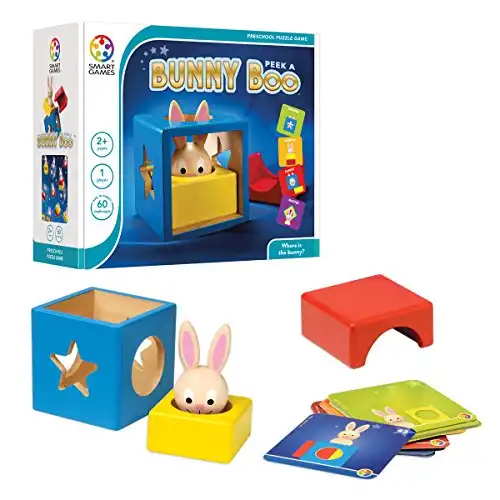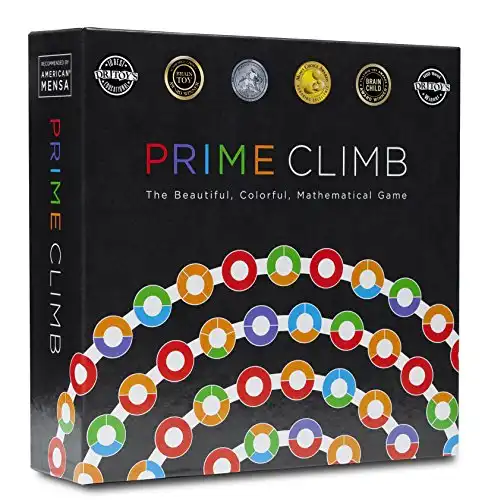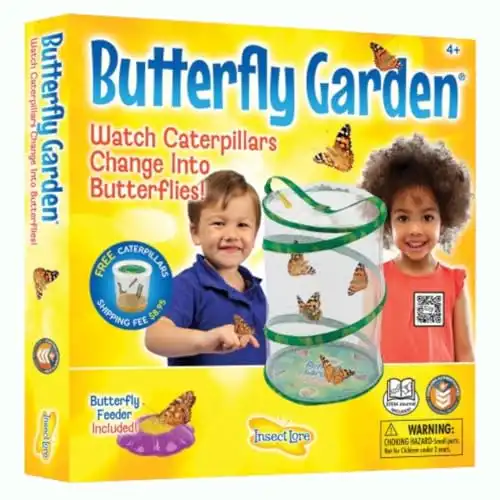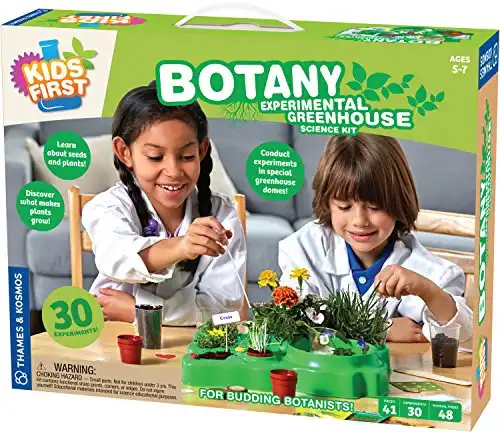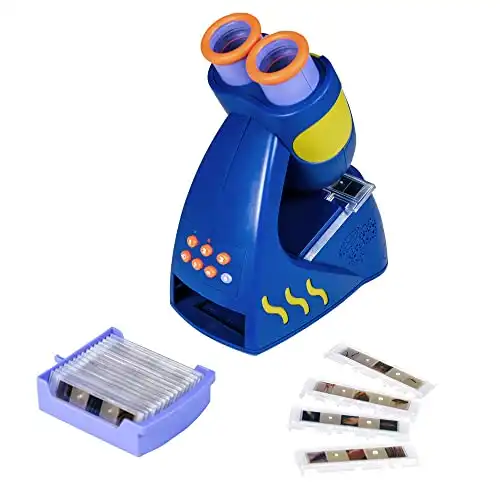STEM Toys for 5 Year Olds: Playtime Innovations for Young Minds
Have you ever wondered how the toys your children play with can impact their development? As someone deeply passionate about fostering young minds through play, I’ve discovered that STEM toys for 5 year olds are not just toys. They’re gateways to a world of innovation, creativity, and learning. In this article, I’ll share insights into why these toys are essential and which ones could be the perfect fit for your little explorers.
In This Article
Introduction To STEM
The importance of STEM (Science, Technology, Engineering, and Mathematics) in early childhood cannot be overstated. It lays the foundation for critical thinking, problem-solving, and a love for learning that lasts a lifetime. And guess what? 5 year olds are at the perfect age to start reaping these benefits. Their curious minds are like sponges, ready to absorb and explore the world around them. Let’s dive into how STEM toys for 5 year olds can make this journey both fun and educational.
Unpacking STEM for Young Learners
STEM is a vast field, but at its core, it’s about exploring, questioning, and solving problems. For young children, this often translates to hands-on activities that stimulate their senses and spark their curiosity. Through play, they learn the fundamentals of STEM without even realizing it. Imagine the joy of building their first robot or understanding why plants need sunlight to grow. It’s all about making learning an adventure.
Benefits of STEM Toys for 5 Year Olds Development
Delving deeper into the benefits of STEM toys for development offers an exciting glimpse into how these innovative playthings can shape a child’s future. STEM toys aren’t just about keeping children occupied; they’re about enriching their lives in multifaceted ways, fostering skills that will serve them throughout their lives. Let’s explore these benefits further.
Cognitive Development
At the heart of STEM toys for 5 year olds is their ability to enhance cognitive skills. These toys challenge young minds to think critically, encouraging them to understand cause and effect, hypothesize, and test their ideas. For instance, when a child experiments with a building set, they’re not just stacking blocks; they’re learning about balance, geometry, and spatial awareness. Coding toys introduce logical sequencing and problem-solving skills, essential in today’s digital world. As children play, they’re also honing their memory and concentration skills, laying a solid foundation for academic success.
Fostering Creativity and Innovation
STEM toys inherently encourage creativity. By presenting open-ended problems and allowing for multiple solutions, these toys stimulate imaginative thinking. Children learn to think outside the box, developing innovative approaches to challenges. This creativity isn’t just beneficial for artistic pursuits; it’s crucial in science, technology, engineering, and mathematics, where new solutions to problems are always in demand. Whether it’s designing a unique structure with building blocks or figuring out how to program a robot to navigate a maze, STEM toys empower children to be creators, not just consumers.
Encouraging Persistence and Resilience
One of the most valuable lessons 5 year old learn from playing with STEM toys is resilience. These toys often present challenges that require multiple attempts to solve. This process teaches children that failure isn’t the end but rather a step towards success. By facing and overcoming obstacles, children develop persistence, learning to approach problems with a can-do attitude and understanding that effort and perseverance lead to achievement. This resilience is a critical life skill, applicable well beyond childhood.
Promoting Teamwork and Communication
Many STEM toys for 5 year olds are designed for collaborative play, which is fantastic for teaching children about teamwork and effective communication. As they work together to build a structure or solve a puzzle, they learn to share ideas, listen to others, and value different perspectives. These social skills are fundamental in both personal and professional settings, ensuring children grow up to be cooperative, empathetic individuals who can work well in teams.
Enhancing Emotional Intelligence
Playing with STEM toys also has a significant impact on emotional development. As children navigate the challenges posed by these toys, they experience a range of emotions—from frustration at a project not working as expected to joy and pride in finally solving a problem. Through these experiences, they learn to manage their emotions, developing patience and self-regulation. Moreover, the positive reinforcement of solving a problem or creating something new boosts self-esteem and confidence.
Sparking Curiosity and a Love for Learning
Perhaps one of the most enduring benefits of STEM toys for 5 year olds is their ability to ignite a lifelong passion for learning. These toys make learning fun, transforming complex concepts into engaging challenges that children are eager to tackle. This positive association with learning from a young age encourages children to be curious, ask questions, and explore the world around them. It lays the groundwork for a love of science, technology, engineering, and math, potentially guiding their educational paths and career choices in the future.
Preparing for the Future
In our rapidly advancing world, the skills that STEM toys develop are more valuable than ever. They prepare children for a future in which technology and innovation play a dominant role. By fostering problem-solving skills, creativity, and a love for learning, STEM toys equip children with the tools they need to succeed in the 21st century.
The Top STEM Toys for 5 Year Olds
Choosing the best STEM toys involves finding toys that not only entertain but also educate, sparking curiosity and fostering a love for learning. At this age, children are at a crucial developmental stage where they begin to understand more complex concepts and enhance their problem-solving, creativity, and critical thinking skills. Here are some of the best STEM toys for 5 year olds, each offering unique educational benefits:
Building and Construction Sets
LEGO Duplo
These larger LEGO blocks are perfect for 5 year olds and offer endless possibilities for creative building. They help develop fine motor skills, spatial awareness, and understanding of geometric concepts. Building according to instructions can also enhance the ability to follow directions and improve attention to detail.
Magna-Tiles
These magnetic building tiles allow children to create 3D structures, fostering an understanding of shapes, patterns, and structural integrity. Playing with Magna-Tiles can also enhance creativity and introduce basic principles of magnetism.
Tegu Magnetic Wooden Block Set
This beautifully crafted set of magnetic wooden blocks offers endless possibilities for creative play, combining the warmth of wood with the intrigue of magnets. It encourages problem-solving and innovation, teaching about balance, geometry, and design.
K’NEX Building Sets
With colorful rods and connectors that snap together, K’NEX sets allow children to construct a variety of models, from simple figures to complex structures. These toys also enhance fine motor skills, spatial awareness, and imaginative play.
Coding Toys
Botley the Coding Robot
Botley introduces coding concepts through fun and engaging activities without the need for a screen. This robot can be programmed to navigate obstacles, follow looping commands, and even perform sequences of tasks, teaching children the basics of algorithmic thinking and problem-solving.
Osmo – Coding Starter Kit
Combining tactile blocks with a digital interface, the Osmo Coding Starter Kit teaches children to control on-screen gameplay through physical coding commands.
This interactive play fosters logic skills and creativity, bridging the gap between physical and digital learning experiences.
Fisher-Price Think & Learn Code-a-Pillar
This toy introduces younger children to the basics of coding, such as sequencing and problem-solving, by rearranging segments of the caterpillar to dictate its path. It’s a playful way to develop logical thinking and early coding skills.
LeapFrog LeapStart
Although not exclusively a coding toy, LeapFrog LeapStart offers a range of interactive books that cover critical thinking, problem-solving, and basic coding concepts.
It’s a comprehensive tool that blends reading with interactive learning, suitable for early learners.
Science Kits
National Geographic Science Kits
Whether it’s growing crystals, exploring volcanoes, or digging up dinosaurs, National Geographic’s science kits make learning about the Earth and its wonders exciting. These kits encourage scientific exploration and inquiry, making them the perfect STEM toy for 5 year olds.
My First Mind Blowing Science Kit
This kit allows children to conduct simple, safe, and fun science experiments that introduce basic chemistry concepts. It encourages hands-on learning and helps develop an understanding of scientific principles through play.
Be Amazing! Toys Big Bag of Science Works
This comprehensive science kit includes everything needed for over 70 experiments, covering areas from chemistry to physics. It’s designed to spark curiosity and encourage a love for scientific exploration.
Math and Logic Puzzles
Melissa & Doug Pattern Blocks and Boards
This classic wooden puzzle consists of shapes and pattern boards that children can use to replicate detailed designs. It teaches shapes, colors, patterns, and early math concepts, promoting spatial skills and critical thinking.
ThinkFun Zingo 1-2-3
A fun twist on traditional bingo, Zingo 1-2-3 helps children learn numbers, counting, addition, and simple math through a fast-paced, engaging game. It’s excellent for developing concentration, social skills, and a love for numbers.
SmartGames Bunny Peek A Boo
This wooden puzzle game introduces children to spatial perception, logic, and problem-solving. With challenges of varying difficulty, it’s perfect for developing critical thinking skills in a playful context.
Math for Love Prime Climb
A board game that beautifully combines math and strategy. While designed for a slightly older audience, with guidance, younger children can grasp the basic concepts of addition, subtraction, and number recognition, making it a great game for family play.
Environmental and Nature Exploration Toys
Painted Lady Butterfly Garden
By raising butterflies from caterpillars, children learn about life cycles, biology, and the importance of caring for living things. This hands-on experience with nature fosters a sense of responsibility and wonder about the natural world.
Kids First Botany – Experimental Greenhouse Kit
This kit allows children to grow plants from seeds, observing the life cycle of plants and understanding the basics of botany. It encourages environmental awareness and scientific observation.
GeoSafari Jr. Talking Microscope
Featuring the voice of Bindi Irwin, this talking microscope introduces young scientists to the tiny world of microscopic images. It’s an engaging way to learn about biology and the environment, enhancing observation skills and interest in science.
Beyond Toys: Everyday STEM Learning Opportunities
Exploring beyond traditional toys opens up a world of STEM learning opportunities that are embedded in everyday experiences. These activities can spark curiosity and foster a deeper understanding of scientific, technological, engineering, and mathematical concepts. Here’s how you can create these enriching experiences:
Nature and Outdoor Exploration
Nature Walks: Take advantage of the learning opportunities your local park or backyard offers. Encourage your child to observe the different types of plants, insects, and animals. Discuss why certain plants grow in some areas but not in others, or how animals adapt to their environment. Collect leaves, rocks, or flowers and categorize them at home to learn about different species and ecosystems.
Stargazing: Introduce your child to astronomy by exploring the night sky. Use apps or a star chart to identify constellations, planets, and the moon’s phases. Discuss the vastness of the universe and basic concepts of gravity and planetary orbits in an age-appropriate way.
Kitchen Experiments
Cooking and Baking: The kitchen is a fantastic lab for young scientists. Cooking involves measurements, fractions, and following a sequence of steps—great for math skills. Explain how heat changes ingredients (such as melting butter or boiling water) or discuss the chemical reactions that make bread rise and cakes bake.
DIY Experiments: Simple, safe experiments can teach basic scientific principles. Create a vinegar and baking soda volcano to learn about chemical reactions, or make slime to explore states of matter. These activities demonstrate scientific concepts in a fun, hands-on way.
Technology and Engineering at Home
DIY Building Projects: Engage in small building or engineering projects using everyday items. Construct a simple birdhouse, create a wooden marble run, or build structures with toothpicks and marshmallows. These activities develop spatial reasoning, problem-solving, and understanding of basic engineering principles.
Tech Exploration: Use technology to learn coding or create digital art. Websites and apps designed for children can teach basic coding through games and challenges. Digital drawing or animation projects can be both creative and tech-savvy, introducing children to graphic design and computer skills.
Math in Daily Life
Shopping Math: Involve your child in grocery shopping by making it a math lesson. Ask them to weigh fruits and vegetables, calculate totals, or figure out discounts. This real-life application of math teaches budgeting, measurement, and basic arithmetic.
Time Management: Use daily routines to teach concepts of time. Create a visual schedule or use timers to manage activities like homework, playtime, or chores. Understanding how to manage time is a practical skill that incorporates math and planning.
Encouraging Curiosity and Questions
“Why” Questions: Children are naturally curious, often asking “why” about everything. Use these questions as opportunities to explore STEM concepts. If you don’t know the answer, research it together. This encourages a love for learning and shows that seeking knowledge is a lifelong process.
Observation Journals: Encourage your child to keep an observation journal for anything that interests them—plants, weather, insects, or machines. Drawing what they see and writing down questions or observations can enhance both scientific thinking and literacy skills.
Closing Thoughts From Me
STEM toys for 5 year olds are more than just playthings; they’re tools that help shape young minds for a brighter future. By choosing the right toys and being actively involved in your child’s play, you’re laying the groundwork for a love of learning that will last a lifetime. Let’s give our kids the best start possible by choosing playtime innovations that educate, inspire, and entertain.
FAQs
What makes a toy a “STEM” toy? STEM toys are designed to teach concepts related to science, technology, engineering, and math through play. These toys encourage problem-solving, critical thinking, and creativity.
Can STEM toys for 5 year olds really make a difference? Absolutely! Early exposure to STEM concepts can foster curiosity, improve cognitive development, and even influence future interests and career paths.
How can I ensure the toy matches my child’s interest? Observe your child’s play patterns and listen to their questions and comments. Choose toys that align with their current fascinations, whether it’s space, animals, or construction.
Are there affordable STEM toys for 5 year olds that are effective? Yes, there are many budget-friendly STEM toys that offer valuable learning experiences. Sometimes, the simplest toys provide the best opportunities for creativity and problem-solving.
How can I balance screen time with physical STEM toys? Set clear boundaries for screen time and encourage hands-on play with physical toys. Incorporate screen-based learning as part of a balanced play diet, choosing educational apps and games that reinforce STEM concepts.

